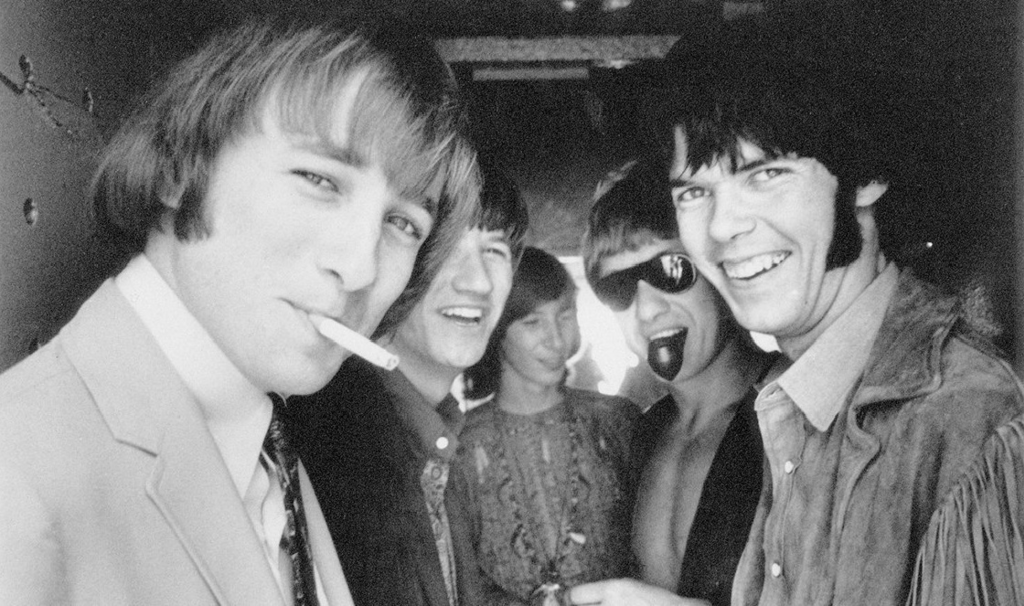A short introduction on Buffalo Springfield
Buffalo Springfield was an American rock group in the 1960s, that opened the solo careers for future superstars Neil Young and Stephen Stills. The group’s other members included Richie Furay (who would also have his own solo career), Dewey Martin, Bruce Palmer, Jim Messina and Doug Hastings. Although the group didn’t exist for long, their three studio albums – the eponymous debut album, Buffalo Springfield Again and Last Time Around – are all critically acclaimed. The band fused rock, folk, psychedelic rock and country to create a sound that was uniquely their own. Their only Top 10 single “For What It’s Worth” cemented their status as the best folk-based band in America. But their success was plagued by internal problems and incidents such as squabbling among the band members, arrests of some of the band members because of drugs and substance abuse as well as personnel changes. Despite their short existence (they disbanded in 1968) the band was influential enough to be given an induction into the Rock and Roll Hall of Fame. They got together in 2000 with surviving members Young, Stills and Furay making reunion tours across the country, and continued to do so until 2012.
Short-lived but star-studded and seminal
The folk/psychedelic rock group Buffalo Springfield began in Los Angeles, California in 1966, however their formation is somewhat unusual and noteworthy. Getting stuck in traffic on Los Angeles’ Sunset Boulevard, Stephen Stills and Richie Furay spotted a black Pontiac hearse which Stills was sure belonged to Neil Young. Bruce Palmer was also in that hearse.
Stills had met Young a year earlier in Toronto, Canada. While both of them had been in their respective groups, they otherwise expressed their desire to form their own band. Young then met bassist Bruce Palmer, and following the botched record deal of their own band the Mynah Birds, the two set out for Los Angeles to find Stills.
From their chance encounter in the Sunset Boulevard traffic, Stills, Furay, Young and Palmer would form a new band. Drummer Dewey Martin was later added to the roster, completing the formation of a new act named Buffalo Springfield.
The band then commenced a short Californian tour, playing as an opening act of Martin’s former band The Dillards as well as The Byrds. Then they began to play in a series of concerts and slowly built up a reputation. Buffalo Springfield landed a recording contract with Atlantic Records label’s Atco subsidiary (their only label thus far).
In their initial lineup, Buffalo Springfield was short-lived, having existed all of just two years. But those two years witnessed the band releasing three remarkable studio LPs Buffalo Springfield (1966), Buffalo Springfield Again (1967) and Last Time Around (1968).
The band recorded their eponymously titled Buffalo Springfield (released in late 1966). A single titled “Nowadays Clancy Can’t Even Sing” had predated the LP’s release; it made little impact on the charts.
Early in 1967 another single from the album “For What It’s Worth” was released. Penned by Stills, “For What It’s Worth” rapidly rose as a popular protest song. It became Buffalo Springfield’s only big hit, peaking at #7 on the Billboard Hot 100 that year. It had grown to be their signature tune.
With the success of “For What It’s Worth”, it established Buffalo Springfield as one of the best Californian rock bands on par with, say, the Byrds.
However, the band experienced lineup changes. Palmer was later arrested and deported back to Canada on drug-related charges (but in June 1967 he returned to the fold). In Palmer’s place Buffalo Springfield employed different bassists as the band moved back and forth between New York and LA, while trying to cope with the demands of recording and touring. In addition to this, creative differences and contrasting egos, especially between Stills and Young, resulted into tensions during Buffalo Springfield’s recording of their second album.
The second album Buffalo Springfield Again (1967), garnered positive critical reviews. Things seemed to be looking bright for them until Palmer’s second arrest and eventual deportation (this time, for good) greatly impaired the group. Young also began to gradually withdraw from Buffalo Springfield, while studio engineer Jim Messina assumed a permanent place in the group as a new bassist.
Their final album, appropriately titled Last Time Around (1968) was recorded and released to fulfill the band’s contractual obligations. The album felt more like a showcase of the member’s solo numbers rather than as one unit; at that point Buffalo Springfield had virtually ceased its function as a band, something which was inevitably bound to happen.
Young launched his solo career, but reunited with Stills in the latter’s supergroup Crosby, Stills & Nash and made himself as an occasional fourth member. Stills also had recorded and released albums under his own name. Messina and Furay formed their own act Poco, but Furay eventually started his own solo career while Messina teamed up with Kenny Loggins as the duo Loggins & Messina.
Rumors of a Buffalo Springfield reunion finally did come into reality in 2010, with only Young, Stills and Furay (Palmer passed away in 2004, Martin in 2009). The surviving BS members played at Young’s annual charity concert The Bridge School Benefit. They also performed in 2011 in selected areas in California and Tennessee. The most recent lineup consisted of the three surviving original members plus new bassist Rick Rosas and drummer Joe Vitale. In 2012 the band announced they were on indefinite hiatus.
Buffalo Springfield was inducted into the Rock and Roll Hall Of Fame in 1997.

